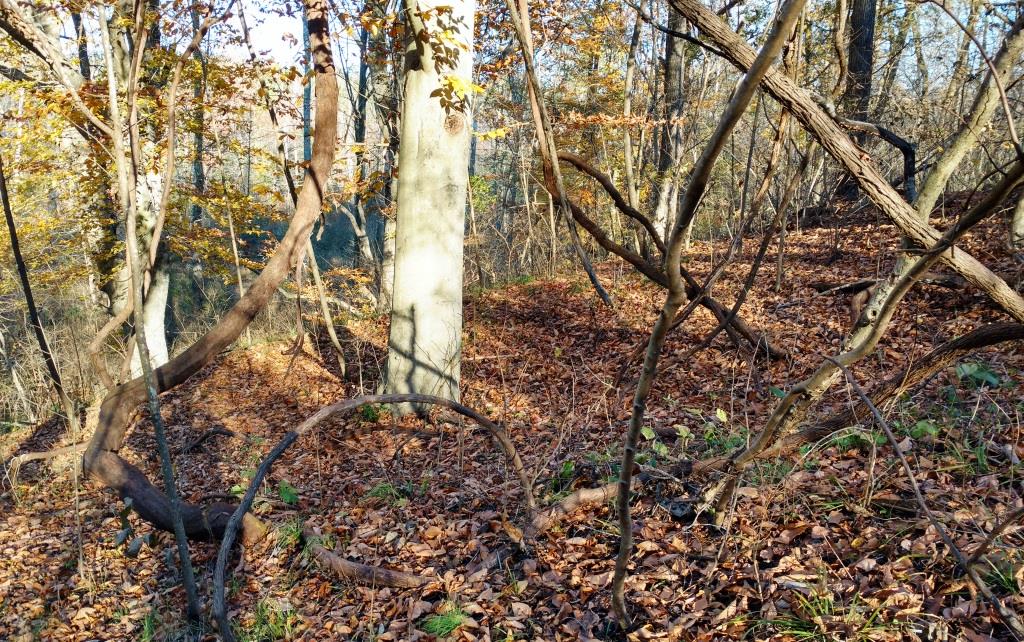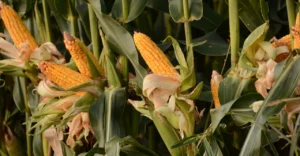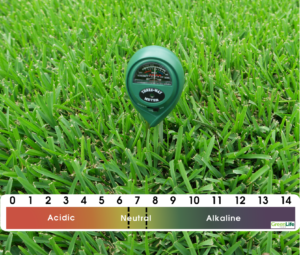| Timber Trespass Information | |
|---|---|
| Number of Trees Cut: | |
| Species of Tree: | |
| Average Diameter (inches): | |
| Market Value per Board Foot ($): | |
| Was the trespass willful/knowing? | |
| Restoration Costs ($): | |
| Calculation Results | |
| Estimated Board Feet: | 0 |
| Base Timber Value ($): | 0.00 |
| Multiplier for Willful Trespass: | 1 |
| Timber Value After Multiplier ($): | 0.00 |
| Total Damages with Restoration ($): | 0.00 |
| Legal Information | |
|---|---|
|
This calculator provides an estimate of potential damages for timber trespass cases. Actual damages may vary based on:
This calculator is for informational purposes only and does not constitute legal advice. |
Understanding Timber Trespass: Your Comprehensive Guide to Property Rights and Damages
What Is Timber Trespass?
Timber trespass occurs when someone cuts, removes, or damages trees on another person’s property without permission. Whether it’s a neighbor who mistakenly crosses property lines, a logging company that extends operations beyond authorized boundaries, or an intentional act of timber theft, these violations can have significant financial and environmental consequences for property owners.
Our Timber Trespass Damages Calculator helps property owners, legal professionals, and forestry experts estimate potential damages in timber trespass cases, providing a starting point for resolution or legal action.
The Real Cost of Unauthorized Tree Removal
When trees are wrongfully cut on your property, the damages extend far beyond the market value of the timber. Property owners may be entitled to compensation for:
- Stumpage value of the harvested timber
- Diminished property value due to aesthetic and environmental changes
- Restoration costs including soil remediation, replanting, and erosion control
- Triple damages in cases of willful trespass (in many jurisdictions)
- Legal fees and court costs associated with pursuing justice
Trees mature over decades, and their value encompasses both tangible and intangible benefits. Our calculator considers multiple factors to provide a comprehensive damage assessment that more accurately reflects your actual loss.
Understanding Your Legal Rights in Timber Trespass Cases
Property owners have strong legal protections against timber trespass. Most states have specific statutes addressing timber trespass that allow for:
- Enhanced damages for willful or knowing violations
- Recovery of survey costs to establish boundary lines
- Attorney fees for the prevailing party
- Specific penalties based on the type, size, and number of trees cut
For example, many states implement a “treble damages” rule, allowing courts to award three times the actual damages when trespassers act knowingly or willfully. Some jurisdictions even permit separate valuation methods based on whether the trees held special value as ornamentals, windbreaks, or for conservation purposes.
How to Use Our Timber Trespass Calculator
Our calculator provides a straightforward method to estimate potential damages:
- Enter the number of trees cut during the trespass
- Select the tree species from the dropdown menu
- Input the average tree diameter in inches
- Specify the market value per board foot for the timber
- Indicate whether the trespass was willful/knowing
- Include any restoration costs that may apply
The calculator automatically computes the estimated board feet, base timber value, applies any applicable multipliers for willful conduct, and tallies your potential total damages.
Remember that this calculation serves as an estimate only. For precise valuations, we recommend consulting with a professional forester and an attorney experienced in timber trespass cases.
The Importance of Accurate Tree Valuation
Proper tree valuation forms the cornerstone of any timber trespass claim. Trees can be valued using various methods:
- Timber value: Based on the current market rate for harvested wood products
- Replacement cost: The expense of planting and growing a similar tree to the same size
- Trunk formula: A method that calculates value based on trunk diameter and species factors
- Diminished property value: How the tree removal affects overall property worth
Professional foresters use industry-standard techniques to measure diameter at breast height (DBH), estimate total board feet using species-specific formulas, and assess timber quality and grade to determine fair market value.
Our calculator incorporates basic industry formulas to estimate board feet, but a professional assessment will provide the most accurate valuation for legal proceedings.
Preventing Timber Trespass on Your Property
Property owners can take proactive steps to prevent timber trespass:
- Mark boundaries clearly with fencing, painted boundary trees, or survey markers
- Conduct regular property inspections, especially of remote areas
- Record baseline documentation including photographs and forest inventories
- Communicate with neighbors before any cutting near boundary lines
- Register with your state’s notification system if available, requiring notice before harvesting operations
- Post “No Trespassing” signs according to state law requirements
These preventative measures not only reduce the risk of trespass but also strengthen your position should a violation occur.
What To Do If You Experience Timber Trespass
If you discover unauthorized tree cutting on your property:
- Document everything with photographs, video, and written notes
- Report the trespass to local law enforcement
- Collect evidence including tree stumps, tire tracks, equipment marks, and witness statements
- Consult with a forester to assess the value of cut timber
- Contact an attorney experienced in timber trespass cases
- Notify your insurance company as your policy may provide coverage
- Use our calculator to get a preliminary estimate of damages
Quick action preserves crucial evidence and strengthens your claim for damages.
Understanding Board Feet Calculations
Our calculator uses a simplified formula to estimate board feet (BF), the standard measure of timber volume:
Board Feet = (Diameter² × Height × 0.055) × Number of Trees
Professional timber assessments typically use more complex methods like the Doyle, Scribner, or International 1/4-Inch log rules, which account for taper, saw kerf, and conversion efficiency. For legal proceedings, we recommend obtaining a professional assessment using the log rule standard in your region.
The Environmental Impact of Timber Trespass
Beyond financial considerations, unauthorized tree removal can cause significant ecological damage:
- Habitat destruction for wildlife species
- Increased erosion and soil destabilization
- Watershed disruption affecting water quality
- Changes in forest composition through selective species removal
- Introduction of invasive species through equipment contamination
These environmental impacts often require specialized remediation efforts that increase the overall restoration costs. Our calculator allows you to include these expenses as part of your damage assessment.
Why Tree Species Matters in Damage Calculations
Tree species significantly influences timber value. Hardwoods like oak, maple, and walnut typically command premium prices for furniture and flooring, while softwoods like pine and fir are valued for construction lumber and paper products.
Special-use species like black walnut can be worth substantially more than average timber, particularly large-diameter specimens suitable for veneer. Our calculator accounts for species variation to provide a more accurate damage estimate.
Legal Precedents in Timber Trespass Cases
Courts across the country have established important precedents in timber trespass cases:
- The distinction between innocent and willful trespass affects damage calculations
- Property owners may recover damages even without plans to harvest the timber themselves
- Emotional distress damages may be available in cases of particularly egregious conduct
- Punitive damages can apply in cases of commercial timber theft or repeated violations
These legal principles guide courts in awarding fair compensation to property owners who experience timber trespass.
Conclusion: Protecting Your Timber Assets
Trees represent both economic and environmental assets that deserve protection. By understanding timber trespass laws, taking preventative measures, and knowing how to respond to violations, property owners can safeguard these valuable resources.
Our Timber Trespass Damages Calculator provides an essential tool for preliminary damage assessment, helping you understand the potential value of your claim. For comprehensive protection of your property rights, we recommend working with qualified legal and forestry professionals who can navigate the complexities of timber trespass law.
Frequently Asked Questions About Timber Trespass
1. What is the difference between timber trespass and timber theft?
Timber trespass occurs when someone cuts trees on another’s property without permission, regardless of intent. It can result from boundary disputes, miscommunication, or deliberate action. Timber theft specifically refers to the intentional stealing of timber, often involving commercial operations that knowingly harvest trees without authorization. While all timber theft constitutes timber trespass, not all timber trespass cases involve intentional theft. Most states treat willful timber trespass more severely than accidental encroachment.
2. How long do I have to file a timber trespass claim?
The statute of limitations for timber trespass varies by state, typically ranging from 1-6 years from discovery of the damage. Some states apply the “discovery rule,” meaning the time limit begins when you discovered or reasonably should have discovered the trespass, rather than when it occurred. For remote properties that aren’t regularly inspected, this distinction can be crucial. Consult with an attorney promptly to ensure your claim is filed within the applicable time limit in your jurisdiction.
3. Can I recover damages if the trespasser has already sold my timber?
Yes, you can still recover damages even if the timber has been removed from your property and sold. Courts can award damages based on the timber’s value, regardless of whether the wood is recoverable. In some cases, you may be entitled to the proceeds from the sale of your timber, plus additional damages. If the trespasser acted willfully, many states permit recovery of multiple damages (often triple) plus attorney fees.
4. How are damages calculated if the trees were ornamental rather than timber trees?
Ornamental trees are typically valued differently than timber trees. Rather than board feet, damages may be calculated based on:
- Replacement cost of similar species and size
- Cost of installation and establishment
- Diminished property value
- Intrinsic value for historic or landmark trees Our calculator is designed primarily for timber valuation, but restoration costs can include specialized appraisals for ornamental trees, which often have significantly higher values than timber trees of the same species.
5. What evidence do I need to prove timber trespass occurred?
Strong evidence in timber trespass cases includes:
- Property surveys establishing boundary lines
- Photographs of cut stumps, logging roads, and equipment tracks
- Witness statements
- Documentation of previous boundary notifications or warnings
- Timber inventory records created before the trespass
- Expert testimony from foresters regarding species, volume, and value
- Chain of custody documentation if timber was sold The more comprehensive your evidence, the stronger your position for negotiation or litigation.
6. Are boundary trees subject to special rules in timber trespass cases?
Yes, boundary trees (those growing on property lines) are typically considered jointly owned by adjoining property owners. Neither owner may remove these trees without the other’s consent. If someone cuts a boundary tree without permission, both property owners may have claims for damages. Some states have specific statutes addressing boundary trees, while others rely on common law principles. These cases often involve complex legal questions regarding ownership and responsibility.
7. Can I recover damages for loss of privacy or shade from removed trees?
Yes, many courts recognize that trees provide functional benefits beyond timber value, including privacy screening, shade, wind protection, and aesthetic value. These non-timber values can be included in damage calculations, particularly for residential properties. Professional arborists can provide valuation assessments that account for these functional losses. Include these considerations in the restoration costs section of our calculator for a more comprehensive damage estimate.
8. What if the trespasser claims they had permission or believed they were on their own property?
The trespasser’s belief or claim of permission can affect the damages calculation but doesn’t necessarily eliminate liability. In most jurisdictions:
- Good faith mistakes may limit damages to actual value (single damages)
- Failure to verify boundaries before cutting may still constitute negligence
- The burden of proof for demonstrating permission typically falls on the trespasser Courts often consider whether the trespasser took reasonable steps to verify property lines before cutting. Written documentation of any agreements regarding tree cutting is always advisable.
9. Are there criminal penalties for timber trespass in addition to civil damages?
Yes, many states impose criminal penalties for timber trespass, particularly when conducted willfully or as part of a commercial operation. Penalties may include:
- Misdemeanor or felony charges depending on timber value
- Criminal fines
- Restitution requirements
- Potential imprisonment for serious violations Criminal prosecution is more common in cases involving substantial timber value or repeat offenders. These proceedings are separate from civil claims for damages but can provide additional leverage in settlement negotiations.
10. How does insurance coverage apply to timber trespass claims?
Some homeowner’s and specialized forestland insurance policies cover timber trespass damages. Key considerations include:
- Whether your policy specifically includes timber coverage
- Limits on per-tree or per-acre coverage amounts
- Requirements for timber inventory documentation
- Notification timelines for claims
- Coverage for legal expenses in pursuing trespassers Review your insurance policy and notify your carrier promptly if you experience timber trespass. Even if your policy doesn’t cover the direct timber loss, liability coverage may apply if you’re accused of trespassing on someone else’s property.






